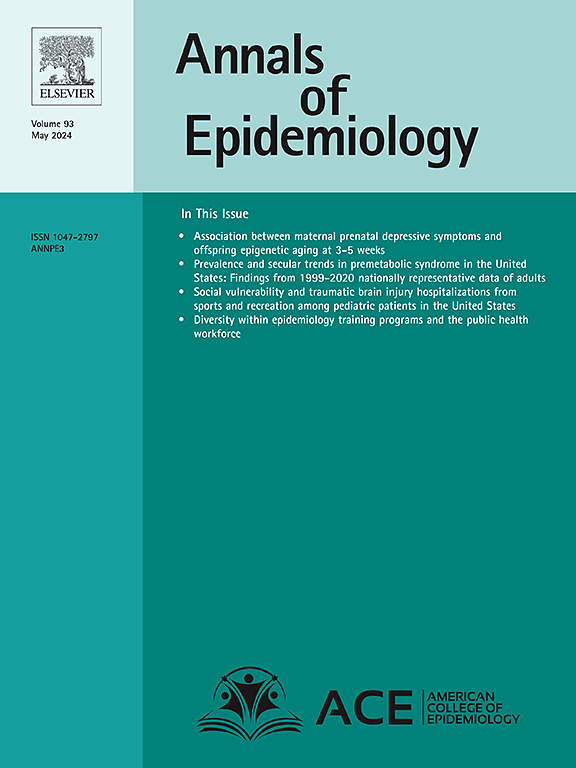Acute gastrointestinal symptoms associated with oil spill exposures among U.S. coast guard responders to the Deepwater Horizon oil spill
IF 3.3
3区 医学
Q1 PUBLIC, ENVIRONMENTAL & OCCUPATIONAL HEALTH
引用次数: 0
Abstract
Purpose
Research investigating gastrointestinal (GI) symptoms from oil spill-related exposures is sparse. We evaluated prevalent GI symptoms among U.S. Coast Guard responders deployed to the Deepwater Horizon oil spill cleanup.
Methods
Crude oil (via skin contact, inhalation, or ingestion routes), combined crude oil/oil dispersant exposures, other deployment exposures, deployment characteristics, demographics, and acute GI symptoms during deployment (i.e., nausea/vomiting, diarrhea, stomach pain, and constipation) were ascertained cross-sectionally via a post-deployment survey (median time between deployment end and survey completion 185 days) (N = 4885). Log-binomial regression analyses were employed to calculate prevalence ratios (PRs) and 95 % confidence intervals (CI). Effect modification was evaluated.
Results
In adjusted models, responders in the highest (versus lowest) tertile of self-reported degree of skin contact to crude oil were more than twice as likely to report nausea/vomiting (PR=2.45; 95 %CI, 1.85–3.23), diarrhea (PR=2.40; 95 %CI, 2.00–2.88), stomach pain (PR=2.51; 95 %CI, 2.01–3.12), and constipation (PR=2.21; 95 %CI, 1.70–2.89). Tests for trend were statistically significant (p < 0.05). Results were similar for crude oil exposure via inhalation and ingestion. Higher PRs for all symptoms were found with combined crude oil/dispersant exposure than with crude oil exposure alone.
Conclusions
These results indicate positive associations between self-reported crude oil and combined crude oil/oil dispersant exposures and acute GI symptoms.
深水地平线 "号漏油事件中美国海岸警卫队救灾人员接触漏油后出现的急性胃肠道症状
目的 对石油泄漏相关暴露引起的胃肠道 (GI) 症状的研究很少。我们评估了部署到 "深水地平线 "溢油清理工作中的美国海岸警卫队救灾人员中普遍存在的胃肠道症状。方法调查了原油(通过皮肤接触、吸入或摄入途径)、原油/石油分散剂综合暴露、其他部署暴露、部署特征、人口统计学以及部署期间的急性胃肠道症状(即恶心/呕吐、腹泻、胃痛和便秘)、恶心/呕吐、腹泻、胃痛和便秘)通过部署后调查(部署结束与调查完成之间的中位时间为 185 天)横向确定(N = 4885)。采用对数二项式回归分析计算流行率 (PR) 和 95 % 置信区间 (CI)。结果在调整后的模型中,自我报告皮肤接触原油程度最高(相对于最低)三等分组中的应答者报告恶心/呕吐的可能性是其他应答者的两倍多(PR=2.45;95 %CI,1.85-3.23)、腹泻(PR=2.40;95 %CI,2.00-2.88)、胃痛(PR=2.51;95 %CI,2.01-3.12)和便秘(PR=2.21;95 %CI,1.70-2.89)的可能性高出一倍。趋势检验具有统计学意义(P < 0.05)。通过吸入和摄入接触原油的结果类似。结论这些结果表明,自我报告的原油和原油/石油消散剂联合暴露与急性消化道症状之间存在正相关。
本文章由计算机程序翻译,如有差异,请以英文原文为准。
求助全文
约1分钟内获得全文
求助全文
来源期刊

Annals of Epidemiology
医学-公共卫生、环境卫生与职业卫生
CiteScore
7.40
自引率
1.80%
发文量
207
审稿时长
59 days
期刊介绍:
The journal emphasizes the application of epidemiologic methods to issues that affect the distribution and determinants of human illness in diverse contexts. Its primary focus is on chronic and acute conditions of diverse etiologies and of major importance to clinical medicine, public health, and health care delivery.
 求助内容:
求助内容: 应助结果提醒方式:
应助结果提醒方式:


